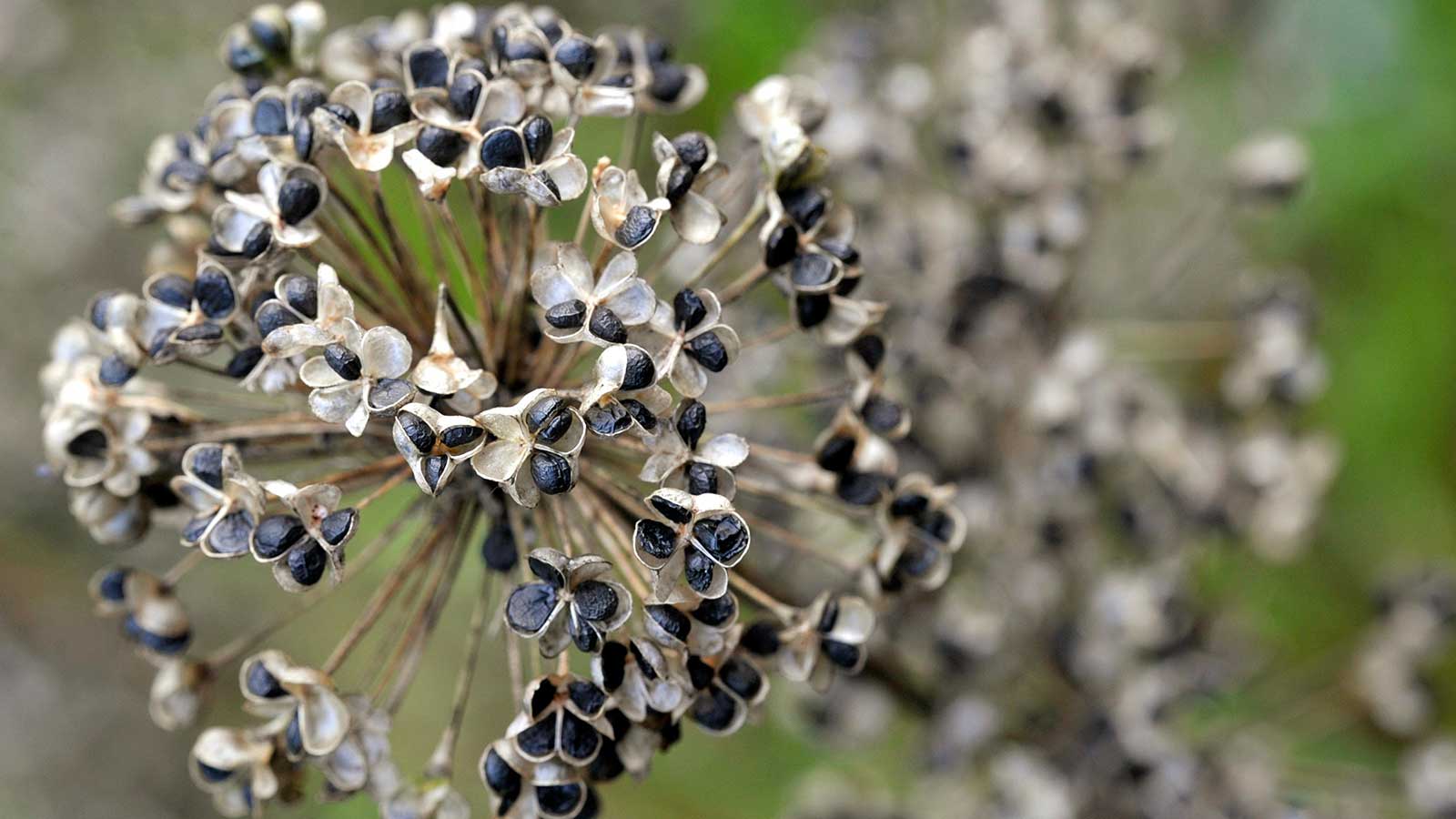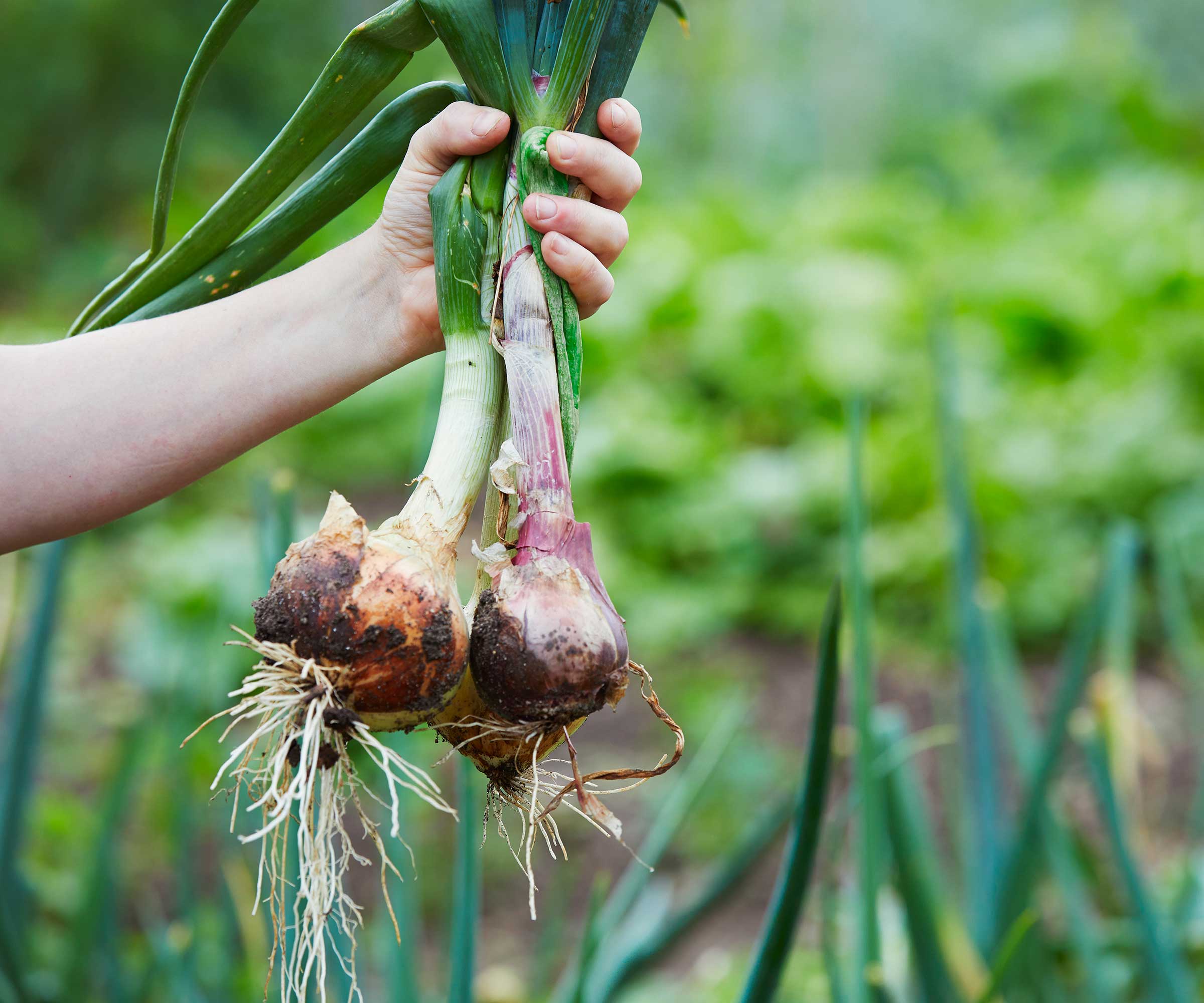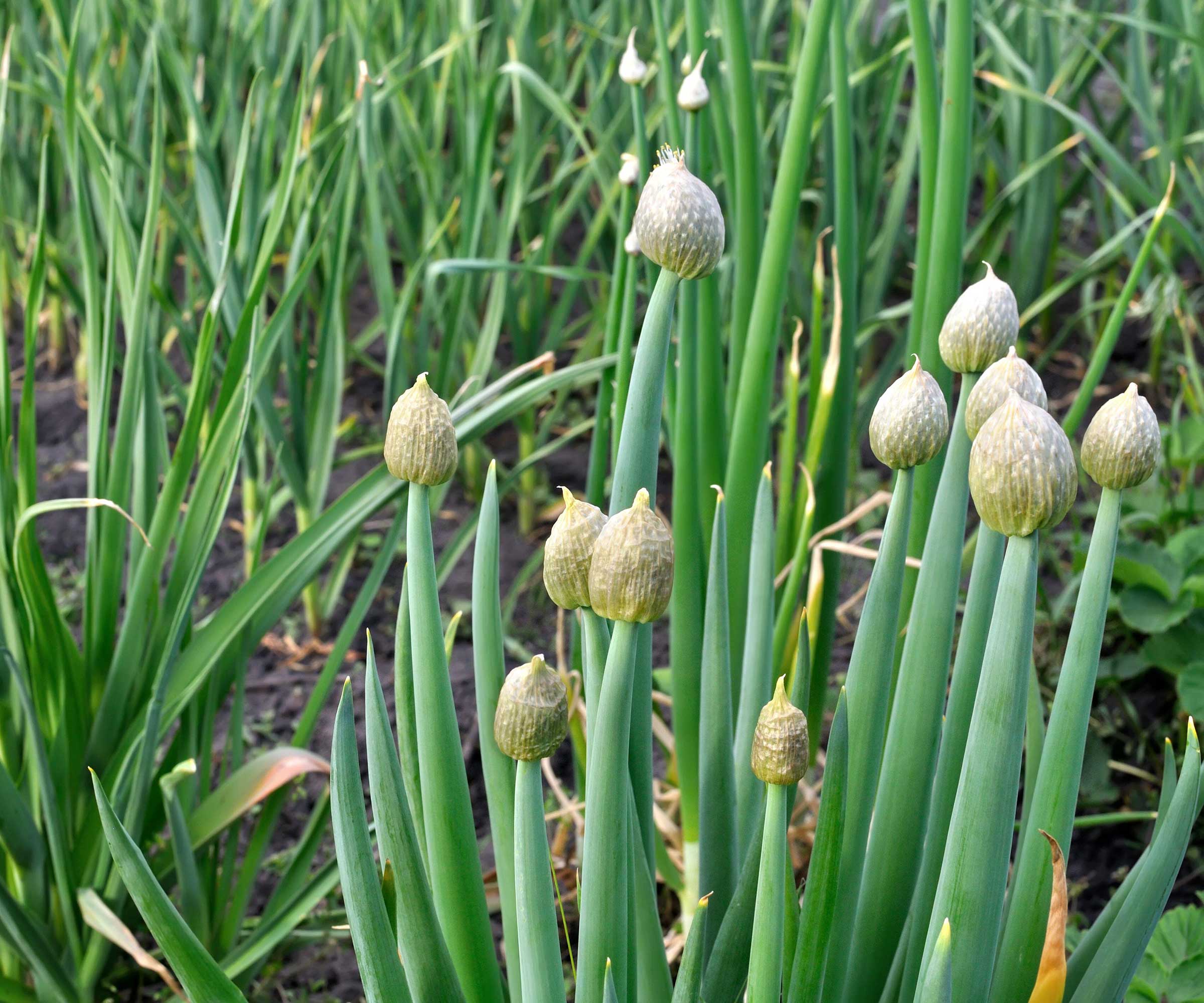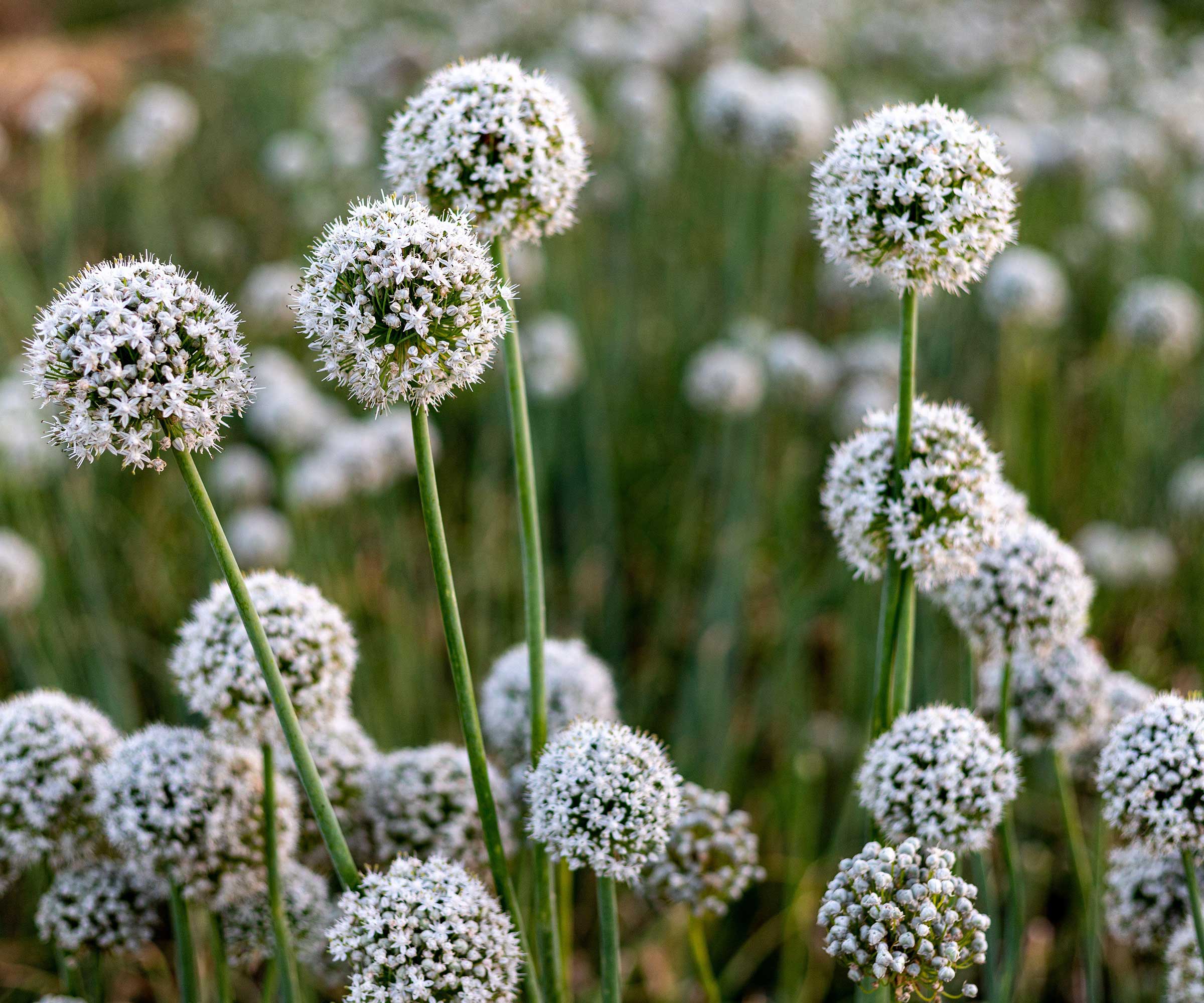
Q: I have grown a crop of onions in my raised beds and would like to harvest some of their seeds to sow. What's the best way to do this?
A: Onions are a staple ingredient in the kitchen and fun to grow at home – and collecting the seeds is a great idea for a free crop. Due to their natural growth cycle, it usually requires a bit of patience, but the method itself is relatively simple.
For tips on how to go about it (and when), as well as recommended varieties to harvest seeds from, I chatted with vegetable gardening experts. Below, they share insights into this budget-friendly gardening task.

A simple guide on collecting onion seeds for sowing
Whether growing onions in containers or in a larger vegetable garden, these tips will come in handy if you would like to save seeds.
When to harvest onion seeds

Drew Swainston, a former professional gardener and content editor at Homes & Gardens, points out that onions are biennial plants, meaning they will bloom and produce seeds in their second year.
'This can mean a bit of forward planning if you want to harvest onion seeds,' he says. 'You can leave some onions in the ground to over-winter. However, if you have very wet ground over winter or lots of hard frosts, it may be beneficial to lift the onions and keep them somewhere cool over winter to plant again in spring.'
In very hot weather, your onions may bolt during the growing season, Drew adds. 'This speeds up the whole process. Let them flower and you can harvest the seeds that follow.'
You can harvest onion seeds after the flower heads have dried and turned brown, advises gardening expert Tony O'Neill. Drew adds that it is best to let the seeds dry on the plant – when they're black, they're ready to collect.
Top tip: If wet weather is forecast, Drew advises cutting the seedheads earlier than you usually would (before they are fully dry), leaving a bit of stalk attached. Hang them upside down with a paper bag wrapped around them. 'The seeds should dry indoors and fall into the bag.'
How to harvest onion seeds

Tony recommends cutting the dry seedheads off the plant and placing them in a paper bag. 'Allow them to dry further in a cool, dry place for about a week.'
Craig Wilson, co-founder, director, and gardening expert at Gardeners Dream, says, 'Once they are dry, give them a good shake. This will release the seeds.' Alternatively, you can gently crush the dried seedheads, suggests Tony. 'Separate the seeds from the chaff by hand or using a fine mesh sieve,' he adds.
These ergonomically designed pruners with their titanium steel blade are the ideal tool for snipping off old flower heads to collect onion seeds. Plus, you can use them to prune and deadhead other plants, too.
FAQs
How should you store harvested onion seeds?
Just like when saving tomato seeds or coneflower seeds, proper storage is essential to ensure your collected onion seeds stay healthy.
'Ensure the seeds are completely dry before storage, to prevent mold or mildew,' says Tony. He recommends keeping them in a glass jar or a seed envelope, labeled with the variety and the date, in a cool, dark location. 'A refrigerator is ideal for maintaining seed viability,' he adds.
We like the transparent window on these seed packets from Amazon, plus they are resealable.
What varieties of onions should you harvest seeds from?
Stick to collecting seeds from heirloom varieties of onions, rather than hybrid ones. This will increase your chances of raising a new crop with the same characteristics, similar to when saving cucumber seeds.
Three heirloom varieties recommended by Tony are 'Yellow Sweet Spanish' ('known for its large bulbs and mild flavor,' he notes), 'Red Burgundy', and 'Walla Walla' (available from Seed Needs at Amazon).
Looking for more tasty crops to collect seeds from? Our guides on how to save watermelon seeds and how to save basil seeds are well worth a look.







